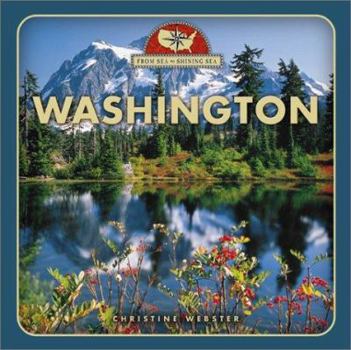Washington
Select Format
Select Condition 
Book Overview
Put kids on the road to discovery with the series that brings the United States to life, state by exciting state. It's all here - the history and geography, the people and culture, plus colorful... This description may be from another edition of this product.
Format:Library Binding
Language:English
ISBN:0516223860
ISBN13:9780516223865
Release Date:January 2003
Publisher:Children's Press(CT)
Length:80 Pages
Weight:0.05 lbs.
Dimensions:0.4" x 9.6" x 9.5"
Age Range:8 to 11 years
Grade Range:Grades 3 to 6
Customer Reviews
1 rating
Taking a tour of Washington, the Evergreen State
Published by Thriftbooks.com User , 18 years ago
The first thing Christine Webster does in Introducing the Evergreen State, in Chapter One of this From Sea to Shining Sea, Second Series volume, is to point out that Washington is the only state in the Pacific Northwest that has both a rain forest and a desert. But the nickname still rings true because more than half the state is covered in forests. Having checked out Olympic National Park on the Olympic Peninsula the last time I visited Washington that seems to be something of an understatement. When Webster asks the standard question in the first chapter as to what comes to mind when you think of the state of Washington, most young students should be able to recognize the Space Needle, Mount St. Helens and Microsoft. The Grand Coulee Dam, Walla Walla's sweet onions, and the Orcas swimming off the coast of the San Juan Islands might be new information. But the point of these books is to fill in the gaps and increase your knowledge about the 50 states (plus Puerto Rico and Washington, D.C.). Chapter Two, The Land of Washington, is devoted to the diverse geography of this state in the northwest corner of the continental United States. Webster lays out the five land regions: the Coastal Range, the Puget Sound Lowlands, the Cascade Mountains, the Columbia Plateau, and the Rocky Mountains. Sections are also devoted to the plants and wildlife, the rivers and lakes, and the climate, which varies depending on what side of the Cascade Range you end up. Chapter Three, Washington Through History, starts off continuing the dual focus on the coastal Native Americans and the plateau or inland Native Americans who settled the area. This is followed by the European explorers who began arriving in the late 1700s and the Americans who populated the Oregon Territory in the middle of the 1800s (the Oregon Territory made up what are now the states of Washington, Oregon, Idaho, and parts of Montana and Wyoming). In 1953 the Oregon territory was divided into Washington and Oregon, and Washington begins to have its own identity. Statehood comes in 1889, and Webster describes the new state as a land of plenty. Sections covering the 20th century touch on World War I and the Great Depression, the importance of the Boeing plant in Seattle during World War II, and Modern Washington, which covers both the World's Far of 1962 and the eruption of Mount St. Helens. Chapter Four, Governing Washington, starts off with a brief description of the three branches of government (there actually are some interesting distinctions between some states on these, but it is usually in terms of the court systems), and then we go on a tour of Olympia, the state capital. The map of downtown Olympia highlights mostly government buildings like the Governor's Mansion and Temple of Justice, but there are also a couple of museums with the Washington State Capitol Museum and the Hands-On Children's Museum. Chapter Five, The People and Places of Washington, which looks at who lives wh





